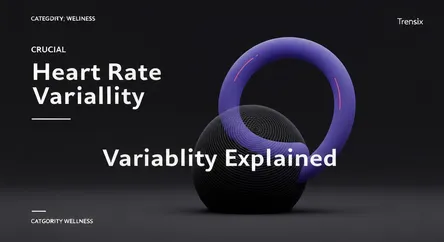Wellness
Heart Rate Variability Explained

Discover what Heart Rate Variability (HRV) is, why it's a key wellness trend, and how it measures your body's fitness, stress, and recovery.
What is it?
Heart Rate Variability (HRV) is the measure of the natural variation in time between your heartbeats. Unlike heart rate, which counts the number of beats per minute, HRV measures the specific timing changes from one beat to the next in milliseconds. This variability is controlled by your autonomic nervous system (ANS), which regulates functions like heart rate and digestion. A healthy heart doesn't beat like a metronome; these slight fluctuations are normal and provide insight into the balance between your sympathetic ("fight-or-flight") and parasympathetic ("rest-and-digest") nervous systems.
Why is it trending?
The popularity of HRV has surged with the rise of wearable technology like smartwatches and fitness trackers. These devices make it easy for anyone to monitor their HRV, a metric once limited to elite athletes and medical research. There is a growing interest in using personalized data to optimize health, fitness, and overall well-being. Athletes use HRV to gauge recovery status and prevent overtraining, while wellness enthusiasts track it to manage stress and improve resilience. It provides an accessible, non-invasive window into how your body is handling physical and mental demands.
How does it affect people?
Generally, a higher HRV is associated with better cardiovascular fitness and an enhanced ability to cope with stress. It suggests your body is responsive and can easily shift from a stressed state to a relaxed one. Conversely, a consistently low HRV can be a sign of stress, fatigue, poor nutrition, or even impending illness. By tracking their HRV trends, people can get objective feedback on their lifestyle. This data can empower individuals to make informed decisions about their workout intensity, sleep habits, and stress management techniques to improve their overall health and performance.